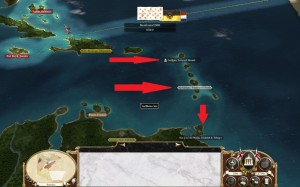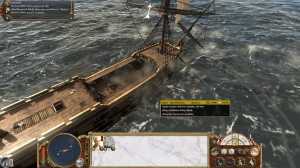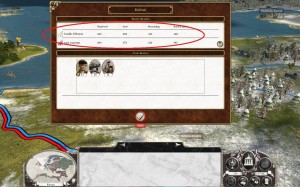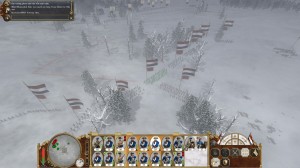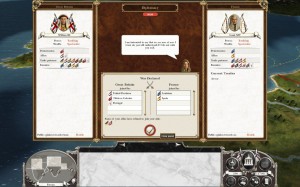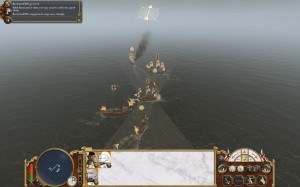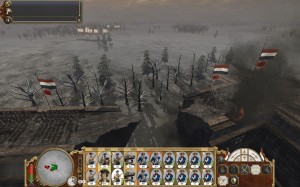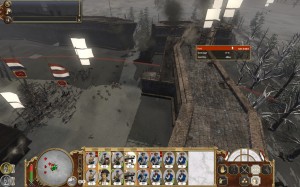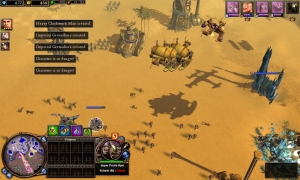Note: Storytelling in Dominions 3, part of this feature series, is available off-site. You can read it at Flash of Steel.
Warning: this post contains extensive spoilers for Fallout 3, including its ending!
***
Ask people what they enjoyed about Fallout 3 (2008), the post-apocalyptic RPG from Bethesda, and most would point to its setting, the ruined Capital Wasteland where Washington DC once stood. It’s a truly impressive world, both for its sheer scope and for the little touches that went into each area. But there was also a story far more character-driven than the game usually gets credit for. At its heart, Fallout 3’s main plotline revolved around the journey of its protagonist, the Lone Wanderer. It explored themes of hope, courage, and sacrifice, made all the stronger for their bleak backdrop. Ultimately, it’s a story I’m glad to have played.
Plenty of ink has been spilled about the game world, but what stood out for me was its interconnectedness. At one point, the Lone Wanderer is trapped in a virtual reality where a vicious scientist has tormented his victims for centuries. Who would voluntarily risk a run-in with such a man? Well, later on, a quest took me to another scientist, Horace Pinkerton, a recluse established as egotistical and brilliant in equal measures. In true RPG fashion, I took the time to look at Pinkerton’s notes – and found he stole some of his equipment from the madman, as easily as taking candy “from a little girl”. How did he know where to look? Once he made it there, how did he get in? And most importantly, how did he get out? The game doesn’t elaborate on those points, preferring to leave it up to our imaginations. But it says a lot about Pinkerton: he must have been both incredibly brave (or plain arrogant), and incredibly skilful. And it hints at adventures in the wasteland beyond what we ourselves experienced.
One aspect of the world becomes very clear, very fast: its tone. The Capital did not become a Wasteland because of aliens, dragons or long-sealed ancient evil. It became that way because of people, in all our greed, our stupidity, our selfishness. And the game goes to great lengths to drive home the resulting gloom. The surroundings are desolate, of course: beyond the shattered buildings and treeless desert, what sticks in my mind is a skeleton on a subway-station bench, slumped next to a handgun and a bloodstain. It’s pretty clear what happened all those centuries ago, and why.
But what we see is just the tip of the iceberg, compared to what we do. For Fallout 3 dared to put you into situations where there was no happy ending. One side quest (which I haven’t played, but which I did read up on), involving a dispute between bigoted humans and the hideously mutated ghouls, presents RPG players with a familiar choice. Do you sign on as a hired gun for the humans, or for the ghouls? Or do you go for the peaceful solution: reconcile the two sides? Clearly, only one of these is a win-win solution. Except it’s not. If the ghouls settle their differences and move in alongside the humans, they will go on to massacre their new neighbours anyway. Today’s victims, the game tells us, may become tomorrow’s oppressors, given the opportunity.
Still, as bleak as this world is, it’s not hopeless. There are spots of light woven in here and there, as individuals try to make what difference they can: Three Dog the DJ sets up a radio station to bring news and information to the survivors of the waste; Moira the shopkeeper-cum-tinkerer decides to pen a “Wasteland Survival Guide”; Dr Madison Li sets up hydroponics labs to feed her adopted home. And then there are your own deeds. Even small acts of kindness, on your part, can make a huge difference to their recipients’ lives: give an orphaned woman the last message left by her dying father, and listen to the gratitude in her voice. Or retrieve the last Stradivarius in the world for an elderly widow, and hear the airwaves come alive with her music.
Hope and valour exist on a grander scale, too. The second thing I love about Fallout 3 is the hero(ine)’s character arc, as chronicled by the main plotline. From the very beginning, Fallout 3 is something special. The first we see of the Capital Wasteland is an operating theatre, as the Lone Wanderer is born – and the moment the Wanderer’s parents learn his/her gender and appearance is the same moment in which we choose them. As we learn how to move in the game, the Wanderer takes his or her first baby steps; the Wanderer receiving a BB gun for a birthday present is the occasion on which we learn how to aim and shoot. We’ve all sat through character generation and tutorial segments in games before, but none immersed me so much as Fallout 3’s integration of these mechanics with its story.
But it’s not until later on that we discover the significance of the Lone Wanderer’s birth. Early on, we learn the hard way: water in the game world is almost always irradiated. And during the course of the story, we eventually find out: the Lone Wanderer’s parents were working in a near-war zone to create Project Purity, a device capable of supplying enough clean water for the entire Wasteland. It could have transformed the game world, had it succeeded… but the Wanderer’s father, James, abandoned the project after the Wanderer’s mother died giving birth to their child. James didn’t throw away Project Purity and the future of the Capital Wasteland for the hell of it. He didn’t do it because he lost heart without his wife. He did it because now that his child was born, the constant attacks on the purifier were too risky for him to bear. And eventually, James gives up his own life, too, arranging an explosion so his child can flee an onrushing invasion.
This takes us to the game’s much-maligned ending. The finale confronts the Lone Wanderer with a choice. Run into an irradiated control room a la Spock and sacrifice his/her life to prevent the now almost-functional, but critically damaged purifier, from exploding? Or be a coward, and ask an accompanying soldier to lay down her own life instead? (The original ending has a nasty plot hole – you have allies who could survive the radiation, but instead of helping, they spout lame excuses about it being “your destiny” to die in there. No wonder people were mad*! The Broken Steel DLC revised this, so now the Wanderer ultimately survives even if you opt for self-sacrifice, and it finally allows you the third option of sending in a rad-immune buddy.)
But with the benefit of Broken Steel, I love the ending for how it rounds off the Lone Wanderer’s story arc. It takes the Wanderer full circle: back to the purifier, not far from where he or she entered the world. And just as the Wanderer’s birth, at the start of the game, triggered James to sacrifice the greater good for the sake of his child, the end of the game asks: can that child make good James’ sacrifice by paying the debt forward? Will the child be a true hero and ensure James didn’t die in vain? It is one of the most satisfying, moving endings I have ever played through.
Last but not least, from a storytelling perspective, I loved so many more things about Fallout 3. Some of the characters I met, such as Amata, the Lone Wanderer’s childhood friend; and Fawkes, the intelligent, principled mutant who swears friendship after you rescue him from the cell where he’s been imprisoned for centuries. The set-piece battles worthy of Hollywood. The unscripted canyon shoot-out against a gang of hit-men, which put me into Clint Eastwood’s shoes. “The world” and “the main character’s journey” would mean nothing if they were boring, but thanks to the characters I encountered and the battles I fought in the Capital Wasteland, my experience was punctuated with humour, pathos, and excitement.
I would have liked any one of Fallout 3’s storytelling elements, in itself. The game is deservedly recognised for its world’s size and attention to detail, and that world struck a perfectly appropriate tone, dark but not hopeless. But I also loved the Lone Wanderer’s character arc, as presented through the game’s main plot. Viewed from this angle, Fallout 3 is the story of an extraordinary life, from birth to death (or near-death, if you have Broken Steel), book-ended by sacrifice. And it was a story made all the better by the other characters, both friend and foe, I encountered along the way. Putting all these elements together, Fallout 3 is one of my favourite games ever. And after 85+ hours, I can walk away with a smile.
Notes
* This interview explains why the companions were so badly worked into the original ending sequence: the ending was written before the companions were added to the game!
I hope you enjoyed this post! To quickly find this post, and my other feature articles, click the “features” tab at the top of this page.
Like this:
Like Loading...

